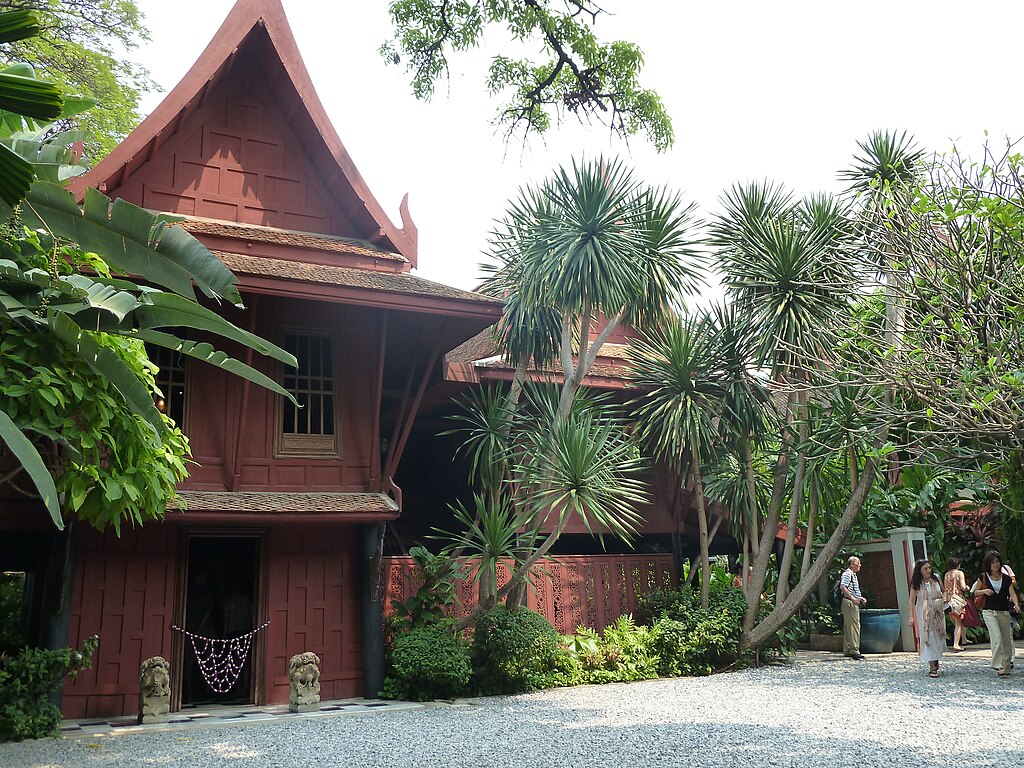From Bali to Bangkok
An essential destination for a stay in the Land of Smiles, the city oscillates between modernity and traditions. You can also visit historic sites and temples that you walk in the middle of ultra modern buildings! The fastest way from Bali to Bangkok is by plane and it takes 4 hours 15 minutes.
Direct airlines from Bali to Bangkok Suvarnabhumi (from DPS to BKK)
- Batik Air (previously operated as MalindoAir)
- Thai Airways
- Lion Air
Direct airlines from Bali to Bangkok Don Muang (from DPS to DMK)
- AirAsia (direct from Bali to DMK)
Airlines from Bali to Bangkok with stops (Undirect)
- Scoot (with 1 stop in Singapore)
- Singapore Airlines (with 1 stop in Singapore)
- JetStar Airways (with 1 stop in Singapore)
- Garuda Indonesia (with 1 stop in Jakarta CGK)
- AirAsia (with 1 stop in Kuala Lumpur KUL)
- Malaysia Airlines (with 1 stop in Kuala Lumpur KUL)
DMK or BKK is better?
DMK (Don Mueang International Airport) and BKK (Suvarnabhumi Airport) are the two main airports in Bangkok, Thailand. Which airport is better depends on several factors such as the airline you’re flying with, your travel itinerary, and your personal preferences.
DMK (Don Mueang International Airport)
If you’re flying with a low-cost carrier such as AirAsia or Nok Air, you’re more likely to arrive and depart from DMK, which is the main hub for budget airlines in Bangkok. DMK is also closer to the city center than BKK, so it may be more convenient if you’re staying in the central area of Bangkok. However, DMK is an older airport and can be a bit more crowded and chaotic than BKK.
BKK (Suvarnabhumi Airport)
On the other hand, if you’re flying with a full-service airline or an international carrier, you’re more likely to arrive and depart from BKK. BKK is a newer and larger airport with more amenities such as lounges, shops, and restaurants. It’s also better connected to other transportation options such as the BTS Skytrain and the Airport Rail Link, making it easier to get to and from the airport.
In terms of travel time and cost, both airports are relatively similar, so it really depends on your individual circumstances. It’s always a good idea to check your flight details and compare the airport options before booking your travel.
Several options for traveling from Bali to Bangkok
There are several options for traveling from Bali to Bangkok. Here are some of the most common options:
Flight
the fastest and most practical way to travel from Bali to Bangkok is to take a direct flight. There are several airlines that offer direct flights between Bali and Bangkok, such as Airasia, Thai Airways, Bangkok Airways, and Garuda Indonesia.
Car
It is possible to drive from Bali to Bangkok, but it requires careful planning and i -depth knowledge of driving in this region. It is also important to remember that road rules can be different in each country. From Bali to Bangkok by care takes 3.5 days.

Montage of Bangkok (top to bottom, left to right): Wat Benchamabophit, View of Chao Phraya River (left: Khlong San district, right: Bang Rak district), Chakri Maha Prast Throne Hall of the Grand Palace, Sao Ching Cha, Asok Montri Road at the Asok Montri Intersection in Watthana district, Democracy Monument, Temple of Dawn. The authors of the derived images are:file:Benjamabopit temple 3.jpg — BerryJfile:Bangkok Pano (I).jpg — Supanut Arunoprayotefile:Phra Thinang Chakri Maha Prasat (II) BKK.jpg — Supanut Arunoprayotefile:เสาชิงช้า 2.JPG — Yakuzakoratfile:ถนนอโศกมนตรี ( สุขุมวิท 21 ) Asok Montri Road (aka Sukhumwit 21 Alley).jpg — Chainwitfile:02-อนุสาวรีย์ประชาธิปไตย.jpg — BerryJfile:0000140 – Wat Arun Ratchawararam 005.jpg — Preecha.MJCompiled by Chainwit., CC BY-SA 3.0, via Wikimedia Commons
Things to do and see in Bangkok
What to do in Bangkok, this huge city of more than 1,500 km2 which has 10 million inhabitants? The city of angels is sometimes criticized for being too polluted, noisy and sulphurous, even stunning. But everyone agrees that it is impossible to be bored in this cosmopolitan capital, with multiple facets. With more than 20 million visitors per year, Bangkok is the most touristy city in the world! And one thing is certain, the vibrant Thai capital does not leave anyone indifferent.
In this Asian city with Western influences, the modern rubs shoulders with the traditional, and great gastronomy is as popular as street food. But we do not always know where to give the head between its skyscraper forest, its majestic temples and its grumbling streets of life. Wondering that seeing absolutely? With this top 15 essential things to do in Bangkok, be sure not to miss anything during your stay!
The Grand Palace and the Wat Phra Kaew (Chao Phraya River)
It is located at the edge of the Chao Phraya river and surrounded by a surrounding wall of almost 1.9 km (1.1 mile).
It is inconceivable to visit Bangkok without going to the Royal Palace, also called the Grand Palace. Erected in 1782 by King Rama I on the right bank of Chao Phraya, it is a high place of Thai political and spiritual life. Its architecture is eclectic, like the kings who have succeeded, and its perfectly maintained gardens. The Royal Palace brings together the Throne hall, a museum, the former royal residence, and one of the most important temples in Thailand, Wat Phra Kaew (Temple of the Emerald Buddha).
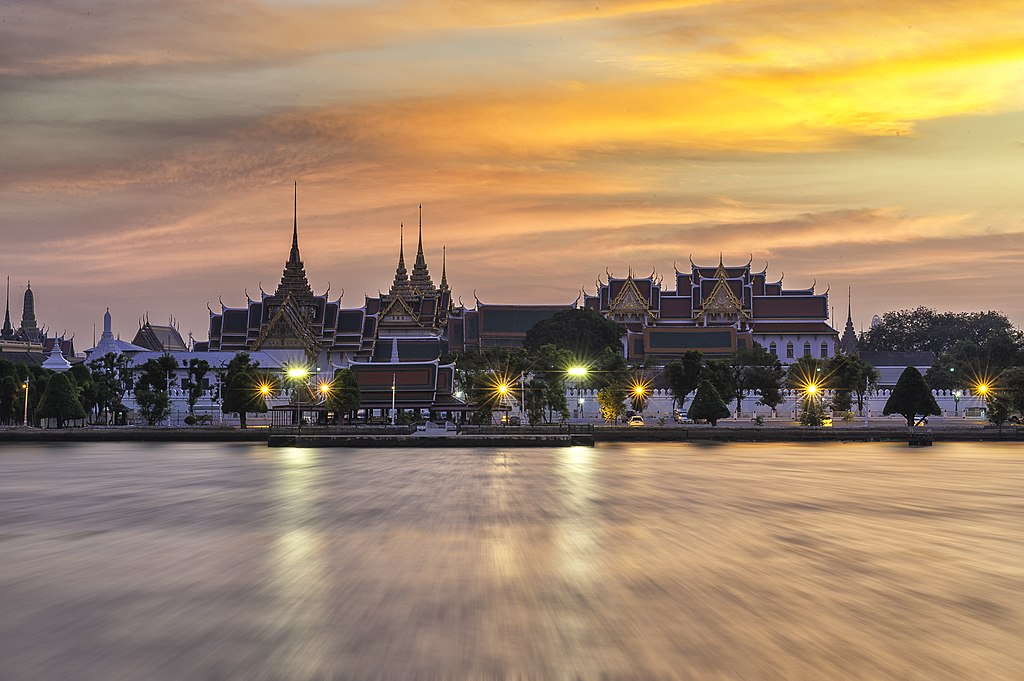
Thailand: The Grand Palace and Wat Phra. Preecha.MJ, CC BY-SA 4.0, via Wikimedia Commons
The Wat Phra Kaew is a sumptuous and colorful temple which owes its renown to the emerald Buddha that it houses. Sculpted in jade and dressed in a gold costume, this sacred statue is the emblem of the Chakri dynasty. This temple alone is worth the visit!
Like everywhere else in Thailand, note that a decent outfit is required to access the temple!
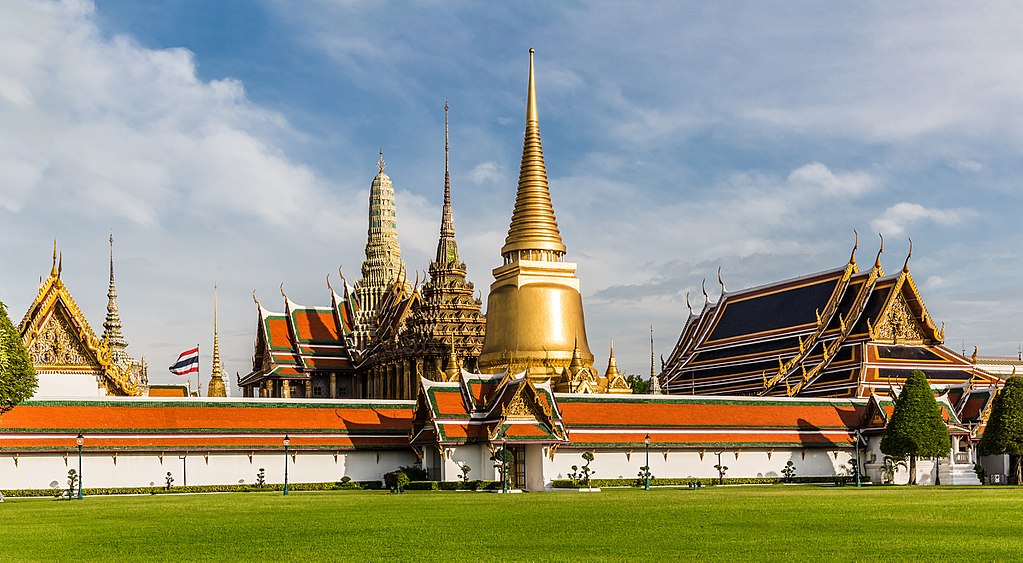
Wat Phra Kaew, viewed from the Outer Court of the Grand Palace, just inside the Wisetchaisi Gate. Also known as the Temple of the Emerald Buddha, it is Thailand’s primary Buddhist temple. Located within the grounds of the Grand Palace, Wat Phra Kaew is technically a royal chapel, as unlike regular temples it does not include living quarters for Buddhist monks. Original image: Ninara from Helsinki, Finland. Edit: TSP, CC BY 4.0, via Wikimedia Commons
Grand Palace Bangkok (Chao Phraya River)
The Grand Palace is a major tourist attraction of Bangkok, the capital of Thailand. It is a palatial complex which was once the official residence of the kings of Siam (ancient name of Thailand) from the 18th century until the middle of the 20th century. Today, the complex is used for royal ceremonies, official visits and events.
The Grand Palace is located in the historic district of Bangkok, near the Chao Phraya river. The complex includes several magnificent buildings, gardens and temples, including the temple of the emerald Buddha, which houses a statue of Buddha sculpted in a single block of green jade. Visitors can explore well -maintained gardens and admire the architecture and complex details of each building.
The Grand Palace is open every day of the year, but there may be public holidays and unforeseen closures for official events. It is recommended to check the opening hours and days before visiting. It is also important to note that visitors must respect a strict dress code when visiting the Grand Palace, including wearing appropriate clothing that cover the shoulders and legs.
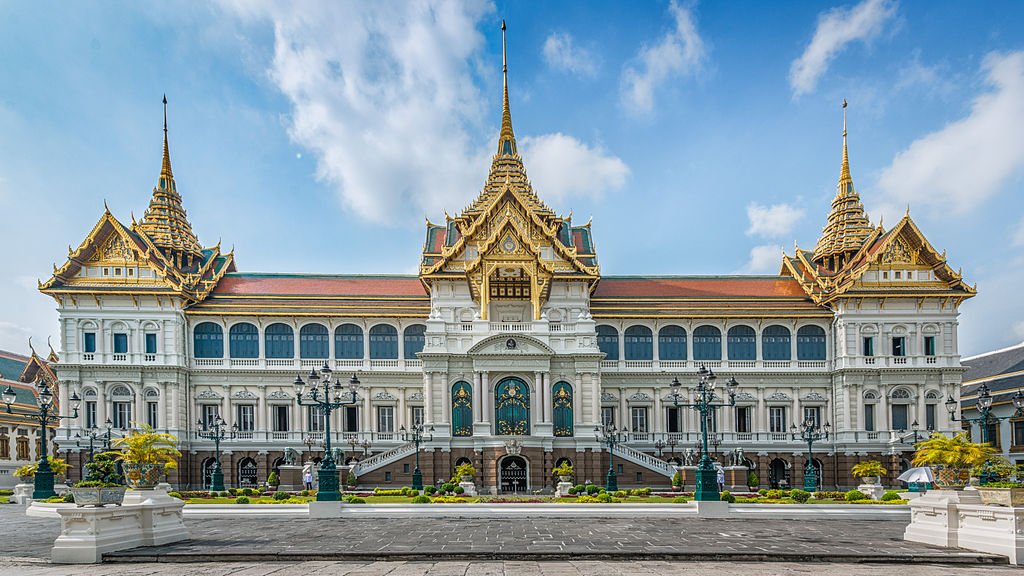
Grand Palace Bangkok, Thailand. Andy Marchand, CC BY-SA 3.0, via Wikimedia Commons
History
The former Royal Palace of Bangkok (Thai: พระ บรม บรม, Phra Borom Maha Ratcha Wang) of Bangkok was built in 1782 by King Rama Ier, the founder of the Cariouati dynasty, on the right (eastern) shore of the chao Phraya when he moved the capital of Thonburi to Bangkok. Throughout successive kingdoms, many new buildings and structures have been added, in particular during the reign of King Chulalongkorn (Rama V).
The palace not only houses the royal residence and the throne room, but also a large number of government offices and the temple of the emerald Buddha (Wat Phra Kaeo, recently renovated).
The current monarch, King Vajiralongkorn (Rama X), is currently at the Chitralada Palace, but the Grand Palais is still used for official events. Several royal ceremonies take place within the walls of the palace each year.
Wat Pho, The Reclining Buddha (Chao Phraya River)
Wat Pho is one of Bangkok’s most famous and visited temples. It is located in the historic district of the city, near the Grand Palace and the Chao Phraya river.
The temple of Wat Pho is also known as the temple of the Buddha lying due to its statue of lying Buddha, which is 46 meters long and 15 meters high. It is one of the largest statues of Buddha in Thailand. The temple also houses more than 1,000 images of Buddha and a collection of steles and historical inscriptions.
Image from the Temple of the Reclining Buddga, inside the central Wat Pho temple complex of Bangkok. Bjoertvedt, CC BY-SA 4.0, via Wikimedia Commons
In addition to the statue of lying Buddha, visitors can explore peaceful gardens and buildings decorated with the temple. There is also a traditional Thai massage school inside the temple, which offers massage lessons and massage services for visitors.
When visiting Wat Pho in Bangkok, there are several sights and areas that you shouldn’t miss:
1. The Reclining Buddha
The highlight of Wat Pho is the impressive Reclining Buddha statue, which is 46 meters long and 15 meters high. Take your time to walk around the statue and admire the intricate details on the soles of the Buddha’s feet.
2. The Four Chedis
Wat Pho features four impressive chedis, which are covered in colorful tiles and intricate carvings. Each chedi represents a different king of the Chakri Dynasty.
3. The Courtyards
Wat Pho is home to several beautiful courtyards, each with its own unique features and decorations. Take a stroll through the courtyards and admire the intricate details and architecture.
4. The Thai Massage School
If you’re interested in traditional Thai massage, you can visit the Thai Massage School within Wat Pho. The school offers courses in Thai massage and visitors can also enjoy a massage treatment.

Medicine pavilion. Bin im Garten, CC BY 3.0, via Wikimedia Commons
5. The Murals
Wat Pho is home to some beautiful murals, depicting scenes from Thai mythology and history. Take a closer look at the murals and appreciate the intricate details and colors.
6. The Chinese Collection
In addition to Thai art and architecture, Wat Pho also features a Chinese collection, with impressive ceramic and porcelain statues and figures.
Remember to dress modestly when visiting Wat Pho, and be respectful of the temple and its grounds. Take your time to explore the complex and appreciate the intricate details and beautiful architecture.
Wat Arun, Temple of Dawn (Chao Phraya River)
Wat Arun, also known as the Temple of Dawn, is a Buddhist temple located on the west bank of the Chao Phraya river in Bangkok, Thailand. The temple is famous for its 70 -meter high central tower, decorated with colored and glass porcelain mosaics.
When you visit Wat Arun, there are several points of interest to see:
- The central tower: the central tower of Wat Arun is the most emblematic characteristic of the temple. To access the tower, you must climb a series of narrow and steep steps. From there, you will have a panoramic view of the Chao Phraya river and on Bangkok.
- Prangs: Wat Arun also has four “Prangs” (Tours), each decorated with complex patterns and sculptures. Prangs are important symbols of Buddhist architecture.
- The Buddha: inside Wat Arun, you can also see a statue of Buddha in solid gold, as well as other statues and images of Buddha.
- The gardens: The temple also has peaceful gardens, where you can walk and enjoy the calm and serene atmosphere.
Wat Arun is open every day from 8 a.m. to 5.30 p.m. The entrance is 100 baht for foreigners and free for Thai. If you want to climb the central tower, it is recommended to wear comfortable shoes and be in good physical shape.
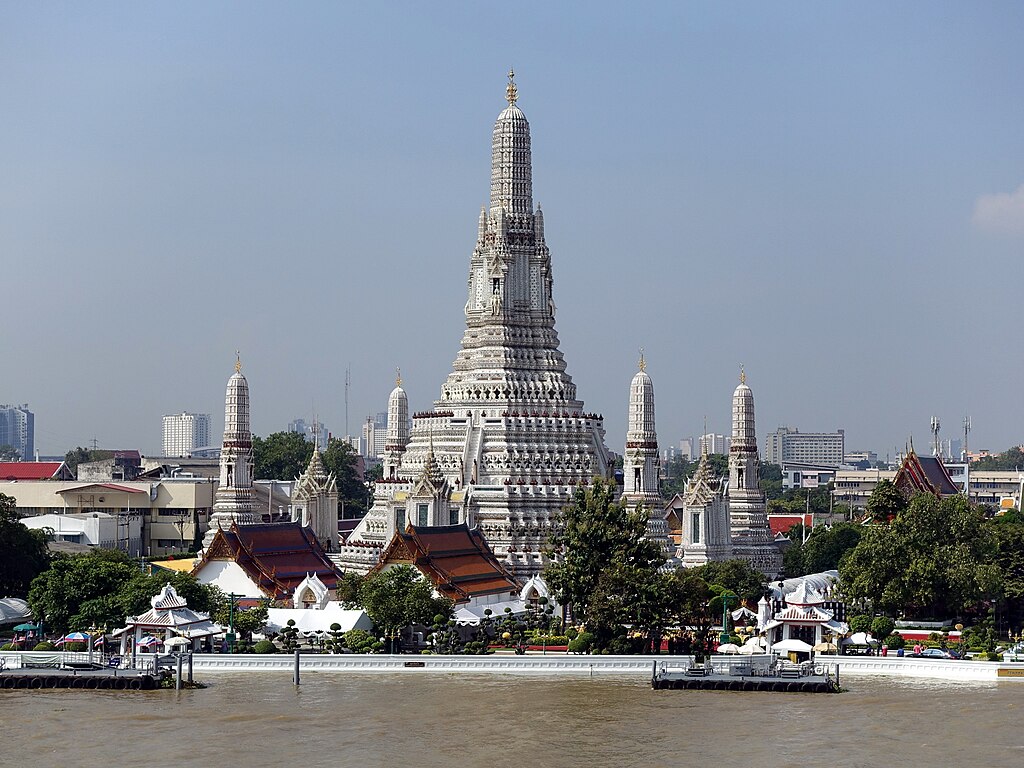
Wat Arun, Temple of Dawn, Bangkok. Paul_012, CC BY-SA 4.0, via Wikimedia Commons
Bangkok National Museum (Chao Phraya River)
By visiting the Bangkok National Museum, you will access the largest collection of Thai art and ancient objects in the country. It is also a good introduction to the history of Thailand, from Prehistory to the beginning of the 20th century.
It is the largest museum in the country and is dedicated to the art, history, and culture of Thailand.
Founded in 1874 by King Rama V, it consists of galleries, but also a temple and pavilions. Treasures, jewelry, sculptures, weapons or instruments from all southeast Asia are exhibited there. Among the masterpieces of the museum, we find the heads of terracotta Buddha of the Dvaravati era, or one of the wheels of the law.
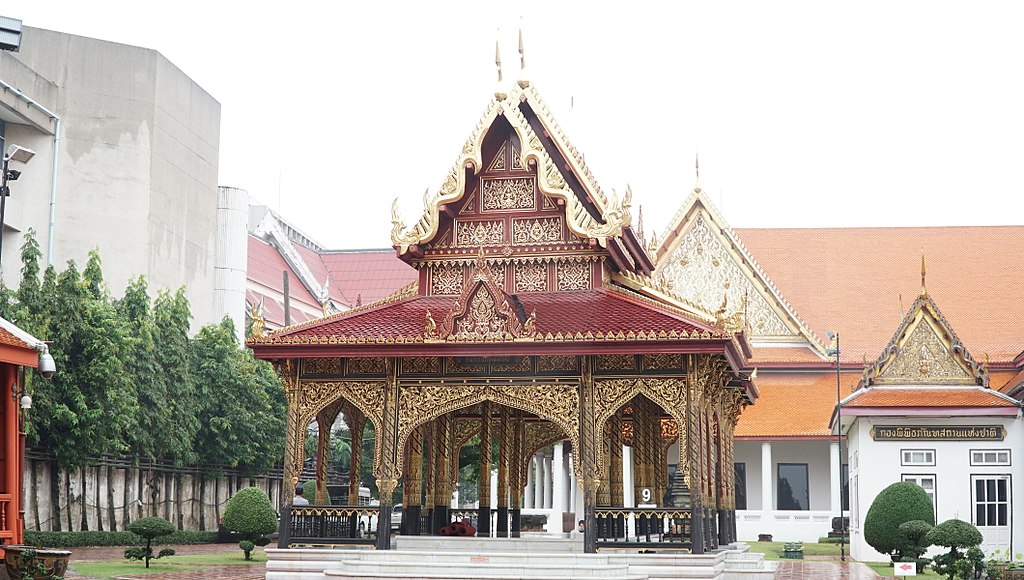
A Thai pavilion in National Museum (Bangkok). Z3144228, CC BY-SA 4.0, via Wikimedia Commons
The museum is open to the public every day except for Mondays, Tuesdays, and public holidays. It is located on Na Phra That Road in the Phra Nakhon district of Bangkok, near the Grand Palace and Wat Phra Kaew (the Temple of the Emerald Buddha).

Bangkok National Museum. Joyofmuseums, CC BY-SA 4.0, via Wikimedia Commons. Credit: https://joyofmuseums.com/
Collections
The museum’s collection includes artifacts and artwork from various periods of Thai history, including prehistoric times, the Sukhothai and Ayutthaya periods, and the Rattanakosin era. The collection includes ceramics, sculptures, textiles, weapons, musical instruments, and other items that showcase the richness and diversity of Thailand’s cultural heritage.

The Gallery of Thai History in Siwamokkhaphiman Hall. Paul_012, CC BY-SA 4.0, via Wikimedia Commons
Some of the most notable items in the museum’s collection include the Phra Buddha Sihing, a bronze Buddha image believed to have been cast in the 13th century, and the King Rama IV Collection, which includes personal belongings of King Mongkut (Rama IV) and his family.
Jim Thompson’s house
Jim Thompson’s house is an old teak house located in Bangkok, Thailand. It was built in 1959 by Jim Thompson, an American who worked in the silk industry in Thailand and who helped to revitalize the Thai silk industry.
Jim Thompson’s house is a remarkable example of traditional Thai architecture and is surrounded by peaceful gardens. Visitors can discover the history of Jim Thompson and his work in the silk industry by visiting the house and its different rooms.
This teak house is today a museum dedicated to the American businessman and art lovers Jim Thompson. He played a major role in the Thai silk industry, then declining in the middle of the 20th century. By founding Thai Silk Company Limited, Jim Thompson contributed to the development of this industry abroad.
In the 1950s, he built this superb Thai architecture house, surrounded by a lush tropical garden. Today it houses its collections of ancient Asian art objects and personal effects. The one nicknamed the king of Thai silk was also a secret agent. He mysteriously disappeared in Malaysia in 1967.

Interiors of the Jim Thompson House / Museum, Bangkok. Bjoertvedt, CC BY-SA 4.0, via Wikimedia Commons
By visiting Jim Thompson’s house, you can see:
- The house: The house is built in teak and is decorated with Thai works of art, antiques and old furniture. You can walk in the different rooms of the house and discover the daily life of Jim Thompson.
- The gardens: The gardens of the house of Jim Thompson are peaceful and green. You can walk in the gardens and enjoy the calm atmosphere.
- The silk shop: Jim Thompson’s house also houses a silk shop, where you can buy high -quality Thai silk fabrics and handicraft products.
Jim Thompson’s house is open daily from 9 a.m. to 6 p.m. Guided tours are available in English and Thai, and audioguides are available in French, German, Spanish, Japanese and Mandarin. Entrance is chargeable.
The Jim Thompson House is now a museum in Bangkok. It is a complex of various old Thai structures that the American businessman Jim Thompson collected from all parts of Thailand in the 1950s and 1960s. It is one of the most popular tourist destinations in Thailand. Deror_avi, CC BY-SA 3.0, via Wikimedia Commons
The Chatuchak market
Do you plan to visit Bangkok for a weekend? Do not miss Chatuchak, the largest market in the country! There are nearly 15,000 merchants and food stands in its narrow and lively aisles.
The Chatuchak market, also known as the catuchak weekend market, is an outdoor market located in Bangkok, Thailand.
Formerly a market exclusively reserved for wholesalers and other merchants, the catuchak market is today a tourist institution and an essential place for tourists in Bangkok.

The clock tower of the Chatuchak Weekend Market in Bangkok. Christophe95, CC BY-SA 4.0, via Wikimedia Commons
Here we walk, we negotiate and we find absolutely everything that sells in Thailand, at very affordable prices. Despite the high attendance, the Chatuchak market remains the best place to make good deals in the capital.
The catuchak market is famous for its variety of products and articles, ranging from clothing, jewelry and fashion accessories, plants, pets, works of art and antiques. There are also many food stands offering a variety of Thai and international dishes.
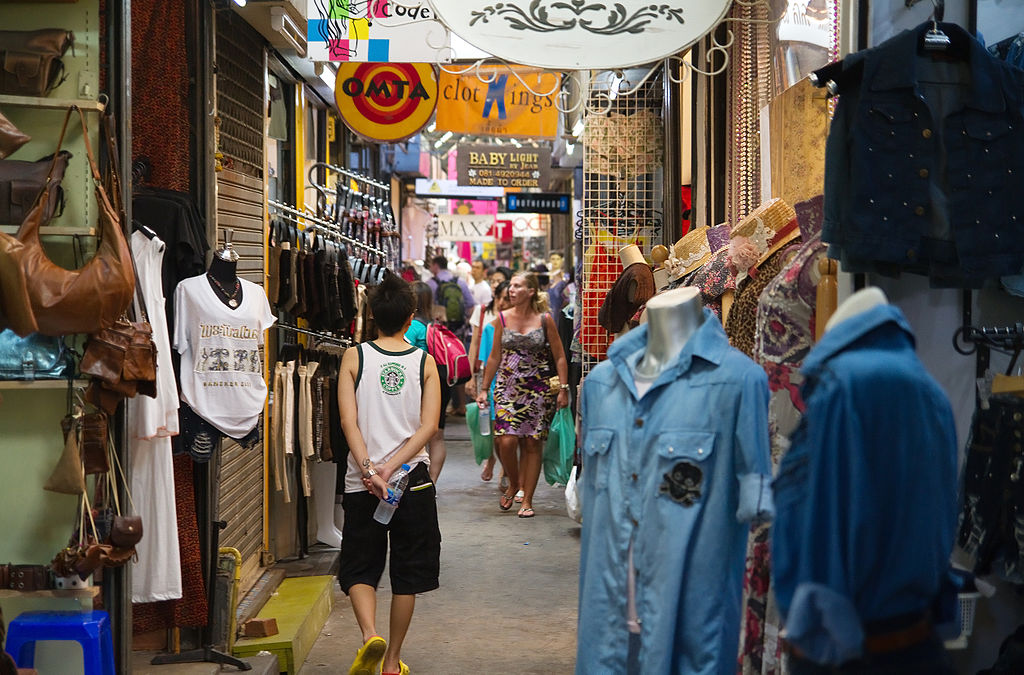
A Narrow Soi at Chatuchak Weekend Market, Bangkok, Thailand. JJ Harrison (https://www.jjharrison.com.au/), CC BY-SA 3.0, via Wikimedia Commons
By visiting the catuchak market, here is what you can find there:
- Clothes: The Chatuchak market offers a wide variety of clothing for men, women and children. You can find cheap clothes and trendy fashion items.
- Jewelry and accessories: There are also many stands offering jewelry, handbags, hats, shoes and other fashion accessories.
- Plants and pets: The Chatuchak market is also known for its plant and flower section. You can find rare plants and exotic flowers there. There is also a section of pets where you can buy dogs, cats and other animals.
- Works of art and antiques: The catuchak market also offers a section dedicated to antiquities, art and Thai crafts. You can find traditional Thai art objects, Buddha statues and rare antiques.
The Chatuchak market is open on Saturdays and Sundays from 9 a.m. to 6 p.m. It is recommended to wear comfortable shoes and be ready to negotiate prices with sellers.
Stroll through the catuchak market
For those of which this is the first time, “tame” the catuchak market seems mission impossible, but it is not. It is actually quite easy to find your way there once you have understood the system. A single large avenue goes around the market. Inside, the ramifications of small streets are numbered in order (Self 1, Self 2, Self … etc).
These aisles are grouped into 27 different sections. Do not try to find a logic “by product category” here because there is none. The sections are just useful to find your way on the map where to find a particular point.
It becomes easy to find your way after a few hours by taking benchmarks like stopping BTS Skytrain and MRT or the banks.
MRT (blue line): stop at Hua Lamphong.

Chatuchak market map.
Globe-trotter, CC BY-SA 3.0, via Wikimedia Commons
Lumpini Park
Visiting Bangkok can be as exciting as it is exhausting. So, strolling in one of its parks is the best way to escape the frenzy of the city, without getting too far away.
Lumpini Park, Bangkok, Thailand view of the Ratchadamri-Ratchaphrasong Commercial District. Jarcje, CC BY-SA 3.0, via Wikimedia Commons
Appointed according to the Buddha birthplace in Nepal, Lumpini Park is one of the green lungs in the capital. It includes a large artificial lake, beautiful lawns and shaded alleys, which temporarily filter the roar of traffic. You can rent pedalos there, attend concerts or observe the geckos and varans that populate the park.
Chinatown Bangkok (Yaowarat road in the Samphanthawong district)
Chinatown Bangkok, also known as Yaowarat, is a bustling neighborhood in Bangkok, Thailand. It is one of the oldest and largest Chinatowns in the world, and it is home to a vibrant Chinese community.
Chinatown in Bangkok. Milei.vencel, CC BY-SA 3.0, via Wikimedia Commons
Lively street markets, food stalls
The neighborhood is known for its lively street markets, food stalls, and traditional Chinese architecture. It is a popular destination for tourists and locals alike who come to sample the delicious street food, shop for souvenirs, and experience the vibrant atmosphere.

Food stands in Chinatown, Bangkok. Christophe95, CC BY-SA 4.0, via Wikimedia Commons
Wat Mangkon Kamalawat, a Chinese Buddhist temple
Some of the top attractions in Chinatown Bangkok include the Wat Mangkon Kamalawat, a Chinese Buddhist temple that dates back to the late 19th century; the Odean Circle, a historic roundabout that is surrounded by shops and food stalls; and the Sampeng Lane Market, a narrow street that is filled with vendors selling everything from clothing to electronics.
Main Hall of Wat Mangkon Kamalawat, Bangkok, Thailand. hkgalbert, Public domain, via Wikimedia Commons
One of the best ways to explore Chinatown Bangkok is by taking a walking tour, which will take you through the winding streets and alleys and give you a chance to sample some of the delicious food. Some of the most popular dishes include dim sum, seafood, and noodles.
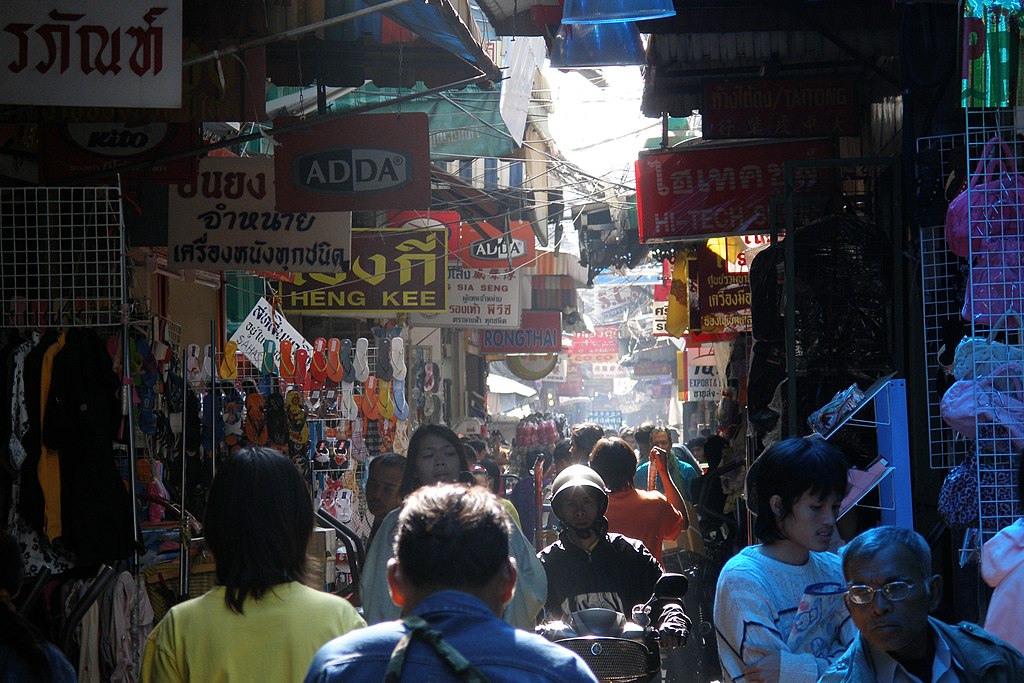
Commuters, shoppers and Chinese merchants in Bangkok’s Chinatown. Sampheng is a historic neighbourhood and market in Bangkok’s Chinatown. Bangkok’s Chinatown is one of the largest Chinatowns in the world. Originally centred around Sampheng, the core of Chinatown now lies along Yaowarat Road. City life. Bangkok, Thailand. © Vyacheslav Argenberg / http://www.vascoplanet.com, CC BY 4.0, via Wikimedia Commons
Chinatown Bangkok is located in the Samphanthawong district of Bangkok
Chinatown Bangkok is located in the Samphanthawong district of Bangkok, and it is easily accessible by public transportation. It is a vibrant and exciting destination that is not to be missed when visiting Bangkok.
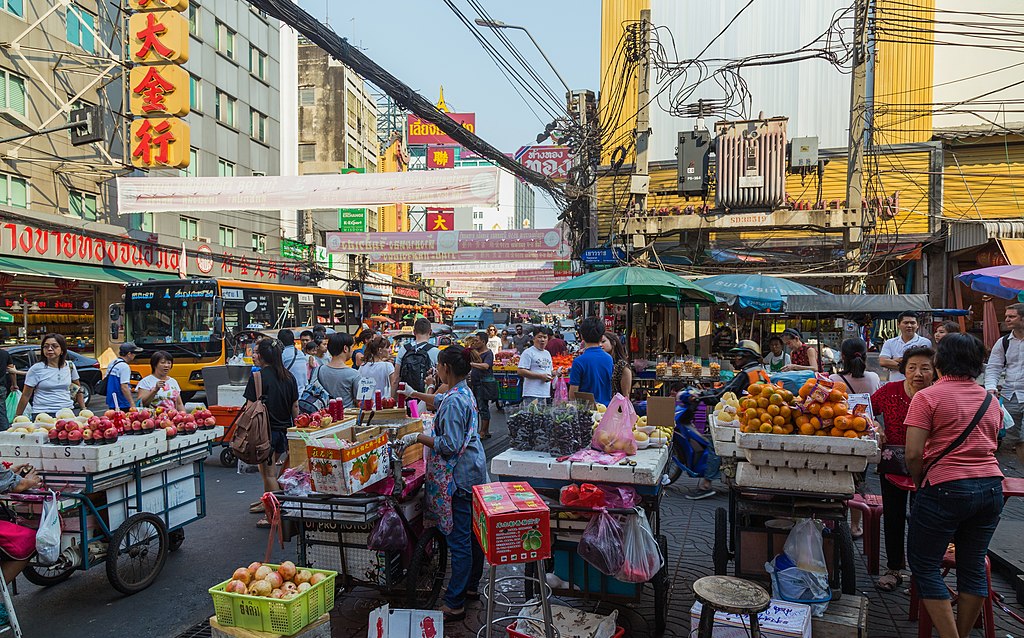
Street food vendors. Yaowarat Road. Samphanthawong District, Bangkok, Thailand. Photo: Marcin Konsek (CC BY-SA 4.0) / Wikimedia Commons
Street food
Bangkok is considered the capital of street cuisine. Admittedly, gourmet restaurants at the top of the most beautiful towers in the city are increasing. But just walk in the street to feast on with delicious culinary specialties, for a few baht. Pad Thai, donuts, sticky rice with mango, sautéed noodles…
Bangkok is famous for its street cuisine, which is considered one of the best in the world. Street food stands are everywhere in the city, offering a wide variety of delicious and inexpensive dishes.
We eat everything and all time! The hardest part will be to resist, because street food stands hide at every street corner of the Thai capital.

Street food. Chakrabongse Road. Phra Nakhon District, Bangkok, Thailand. Photo: Marcin Konsek (CC BY-SA 4.0) / Wikimedia Commons
Here are some of the most popular street food specialties in Bangkok:
- Pad Thai – A sautéed rice noodle dish with eggs, vegetables and peanuts.
- Som Tam – A spicy green papaya salad with tomatoes, green beans, peanuts and lemon juice.
- Khao Pad – Frit rice with eggs, vegetables and meat or seafood.
- Moo Ping – grilled pork skewers marinated in a sweet sauce.
- Satay – grilled meat skewers, generally chicken or beef, with peanut sauce.
- Kai Jeow – A Thai omelet made with eggs, vegetables and meat or seafood.
- GAI TOD – Fried chicken served with a spicy sauce.
- Guay Teow – A Thai noodle soup with meat or seafood.
- Khanom Krok – Coconut and sweet and salty rice pancakes.
- ROTI – A kind of Thai pancake served with sweet concentrated milk or curry.
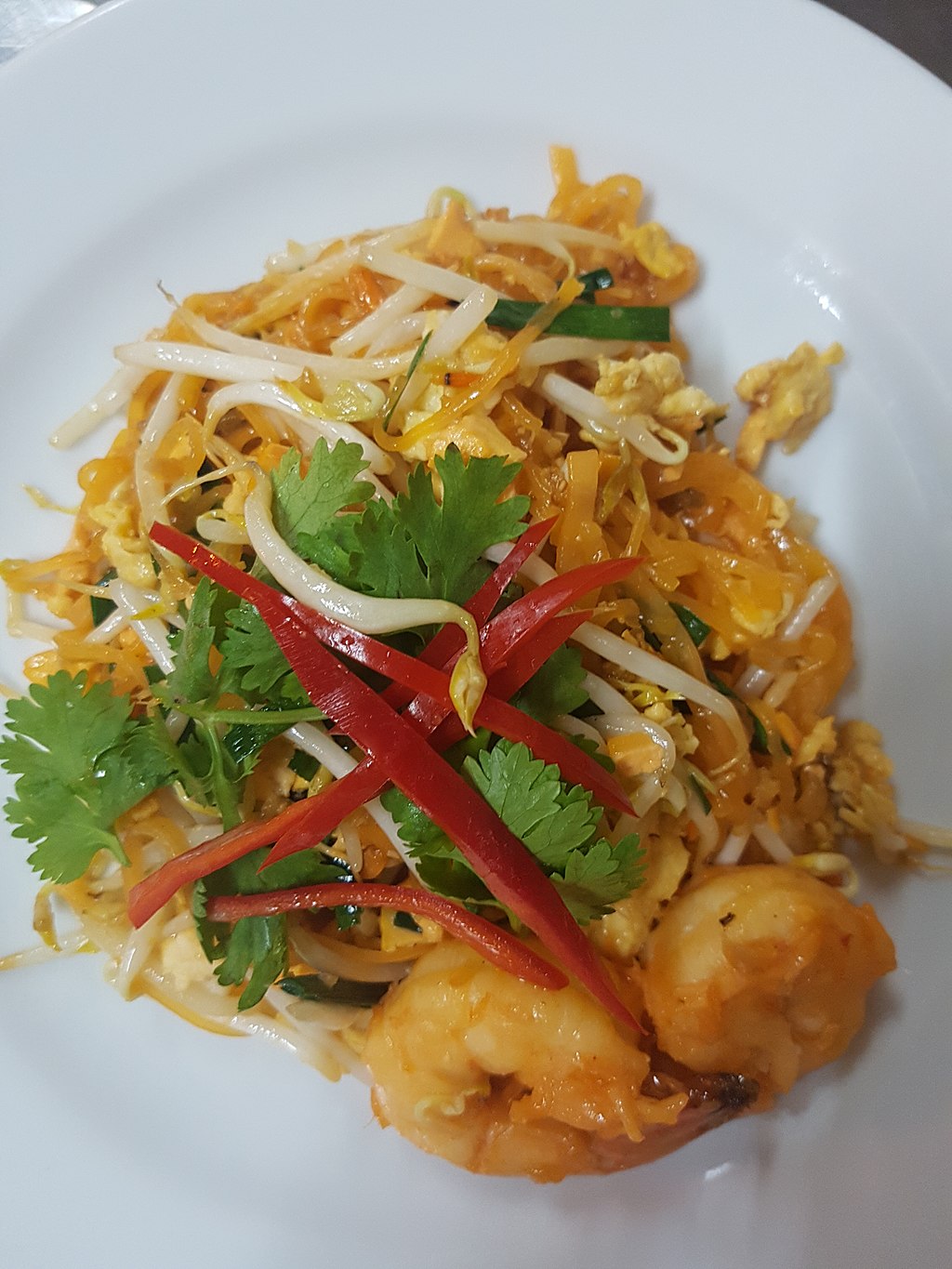
Pad Thai. Iudexvivorum, CC0, via Wikimedia Commons
It is important to note that street food stands in Bangkok are not regulated in the same way as traditional restaurants, so it is important to choose clean and popular stands to avoid health risks.
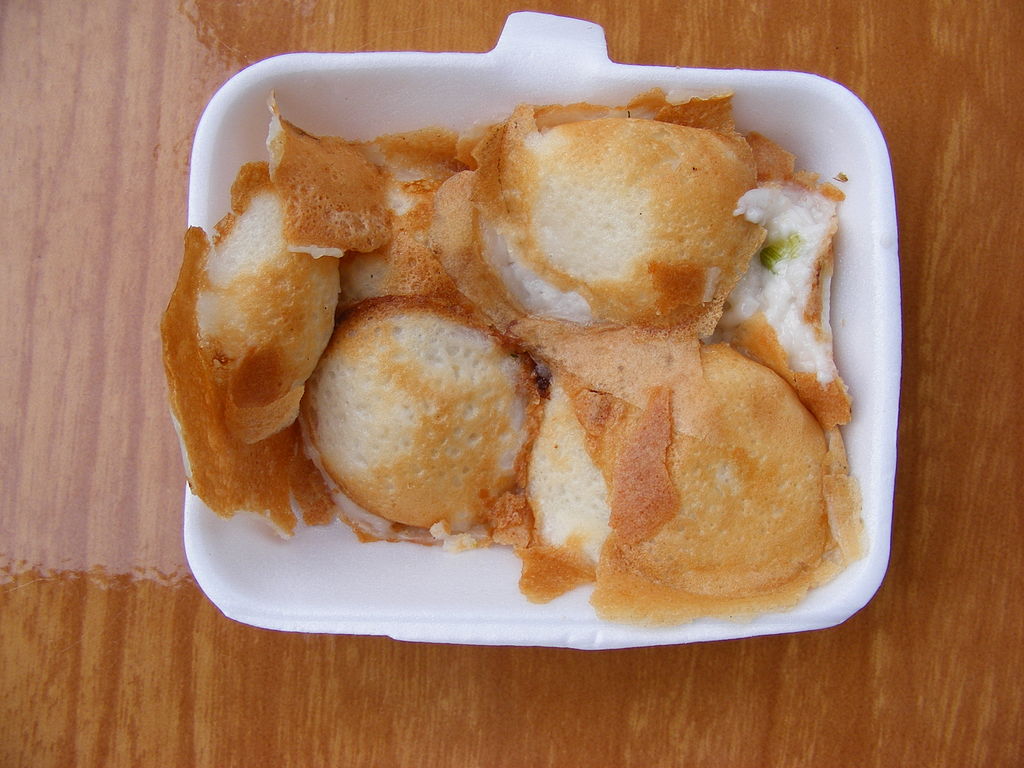
Khanom Krok, coconut and sweet and salty rice pancakes. User:Mattes, CC BY-SA 3.0, via Wikimedia Commons
Rooftops
To gain height and appreciate a breathtaking view of the city, a rooftop is always a good idea! Bangkok has a multitude of skyscrapers whose roofs have been set up in the pool, bar or restaurant.

Sunset seen from The Speakeasy rooftop bar, Bangkok. kallerna, CC BY-SA 4.0, via Wikimedia Commons
Generally very classy, they allow you to enjoy the sweet Thai evenings on the terrace, a cocktail in hand, above the illuminated city.

Bangkok City as viewed from Octave Rooftop Bar and Lounge. Wishva de Silva, CC BY-SA 4.0, via Wikimedia Commons
If you decide to please yourself, here is a non-exhaustive list of the best Rooftops in Bangkok:
- The Baiyoke II tower
- Cloud 47
- The Blue Sky Bar
- The Sky Bar
- The Vertigo and Moon Bar
- The Mahanakhon Skywalk
- Octave Rooftop
- Above Eleven
- Park Society
- Red Sky
- Speakeasy Rooftop Bar
To move around inside Bangkok
On site, you can travel by taxi or tuk-tuk. Otherwise, public transport is well developed in the Thai capital. There are many bus lines, an air metro (BTS) and an underground metro (MRT). In addition, a special line connects the airport to the city center (Airport Rail Link). The Chao Praya Express and the different shuttles will allow you to move to the river.
There are several transport options to move around in Bangkok:
- Tuk-tuk – Tuk-tuks are motorized tricycles which are a popular form of transport in Bangkok. They are often used for short journeys and can be a little more expensive than other transport options.
- Taxis – Taxis are a practical and inexpensive way to move to Bangkok. Taxis are easily available throughout the city and are equipped with a counter. It is important to ensure that the driver activates the counter before starting the journey.
- BTS Skytrain – The BTS Skytrain is an air metro system which links several districts of Bangkok. It is a quick and practical way to move around the city, especially during peak hours.
- Subway MRT – Subway MRT is another public transportation system in Bangkok. It covers areas of downtown Bangkok and can be useful for getting around the city quickly.
- Bus – there are many public buses in Bangkok, but they can be tricky to navigate if you don’t know the city well. It is recommended to use a transport app to find the right bus to take.

2023 Bangkok actual rail transport scheme – BTS, MRT, Airlink, Monorail. Nord794ub, CC BY-SA 4.0, via Wikimedia Commons
It is important to note that Bangkok is a very busy city and traffic can be very heavy, especially during rush hour. It is therefore important to allow enough time to move from place to place and to choose the mode of transport that best suits your needs.
Sources: CleverlySmart, PinterPandai
Photo credit (main picture): Peggy_Marco via Pixabay
Must See Places in Indonesia | A Guide to the Country’s Best Attractions to Explore and Discover
Have you booked your villa in Seminyak center?
Located in Seminyak Center – Bali, Villa Carissa offers a private swimming pool and enclosed garden to guarantee your privacy. You can book your private pool villa here with us. Or you can book via AirBnB, Booking.com


